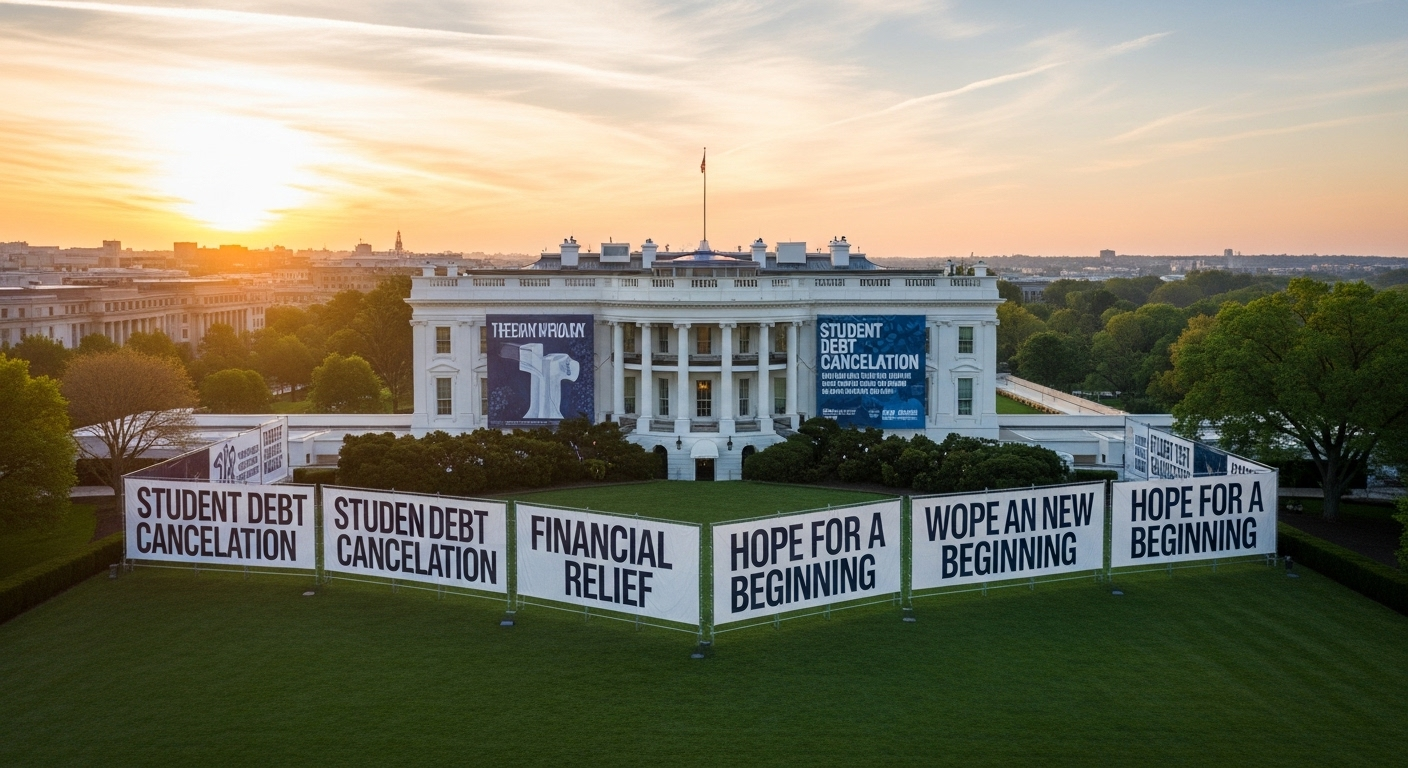The White House agrees to cancel student debt for millions of borrowers in a significant policy reversal that provides relief to over 2.5 million Americans enrolled in
federal income-driven repayment programs. This landmark agreement with the American Federation of Teachers (AFT) marks a dramatic shift from the Trump administration’s
previous stance on student loan forgiveness.



White House Reverses Course on Student Debt Cancellation
In a surprising turn of events, the Trump administration has agreed to resume processing student loan forgiveness for eligible borrowers in two key income-driven repayment plans: Income-Contingent Repayment (ICR) and Pay as You Earn (PAYE). This decision comes after months of legal pressure and represents a complete pivot from earlier policies that blocked access to these debt relief programs.
The agreement ensures that borrowers in these programs will continue receiving loan forgiveness until the plans officially expire on July 1, 2028, as outlined in President Trump’s comprehensive spending legislation dubbed the “Big, Beautiful Bill.”
Legal Victory for Borrowers and Union Representatives
Winston Berkman-Breen, legal director for Protect Borrowers, which represented the teachers’ union in the lawsuit, celebrated the outcome. “This is a tremendous win for borrowers. With today’s filing, borrowers can rest a little easier,” he stated. The agreement requires the US Department of Education to follow existing law and deliver affordable payments and debt relief under court supervision.
The AFT, representing approximately 1.8 million union members, filed the lawsuit in March after accusing Trump officials of illegally blocking federal student loan holders from accessing programs that were available when they initially borrowed money for their education.
Tax Relief Component of the Agreement
Under Friday’s settlement, borrowers who become eligible for student loan forgiveness during 2024 will not face federal tax obligations on their debt relief. This provision addresses a significant concern among borrowers who previously worried about potential tax burdens from forgiven debt amounts.
The Department of Education has not yet provided detailed comments about implementation timelines or specific procedures for processing these forgiveness applications.
Background: The Pause That Sparked Controversy
Earlier this year, the White House temporarily suspended student loan forgiveness under several income-driven repayment plans. These programs, designed to make education more affordable, calculate monthly payments based on borrowers’ income levels and typically cancel remaining debt after 20 to 25 years of consistent payments.
Trump’s Education Department, under the leadership of Linda McMahon, justified these blocks by citing a court order that paused the Biden-era Saving on a Valuable Education (SAVE) plan. However, critics argued this reasoning was legally flawed and unfairly penalized borrowers who had relied on these programs for years.
Impact on Borrower Options and Monthly Payments
The temporary suspension left millions of borrowers with extremely limited options, essentially forcing them into the Income-Based Repayment (IBR) plan as their only path to eventual loan cancellation. This restriction created significant financial hardship for many families who had structured their budgets around more favorable payment terms.
According to analysis from the Student Borrower Protection Center, the elimination of flexible repayment options could have increased typical monthly payments by hundreds of dollars. Such dramatic increases would have pushed many borrowers toward default or financial distress.
Broader Context: Student Debt Crisis Continues
This agreement addresses immediate concerns for current borrowers, but the broader student debt crisis remains a significant challenge. With over 45 million Americans carrying student loan debt totaling approximately $1.7 trillion, policymakers continue searching for comprehensive solutions.
The decision to phase out ICR and PAYE programs by 2028 reflects ongoing political tensions around student debt relief. While this agreement provides temporary relief, borrowers should prepare for potential changes to available programs in the coming years.
What This Means for Current and Future Borrowers
Current borrowers enrolled in ICR and PAYE programs can now proceed with confidence that their loan forgiveness timelines remain intact. Those approaching their 20 or 25-year forgiveness milestones should continue making payments as scheduled and maintain accurate income documentation.
Future borrowers should carefully consider their repayment options, understanding that the landscape of available programs may look different after 2028. Financial advisors recommend exploring all available federal programs before considering private alternatives.
For more insights on how policy changes affect personal financial planning, explore our analysis of how luxury markets reflect broader economic trends.
If you’re currently enrolled in an income-driven repayment plan or considering your student loan options, contact your loan servicer to understand how this agreement affects your specific situation and ensure you’re maximizing available benefits.